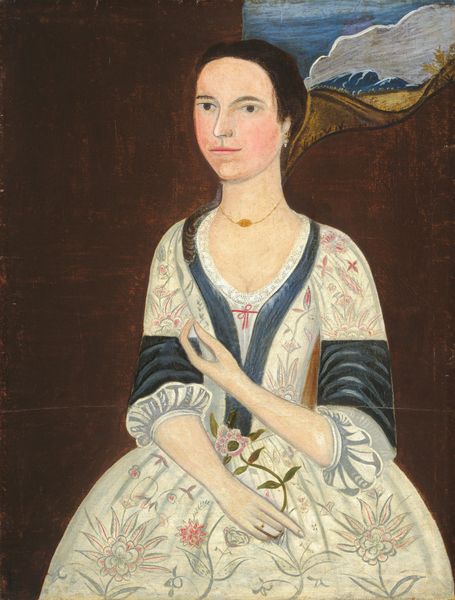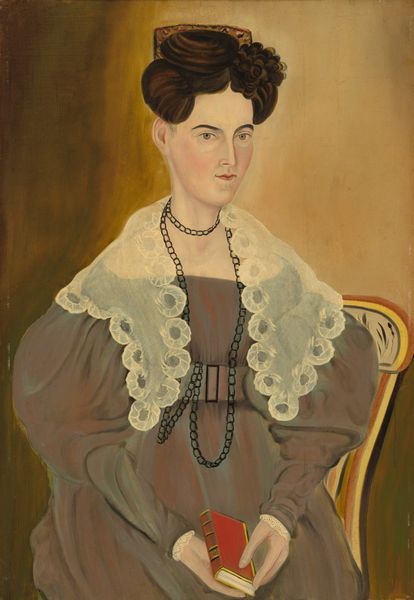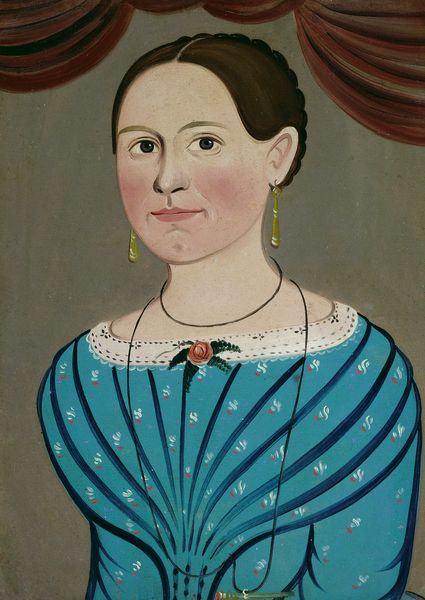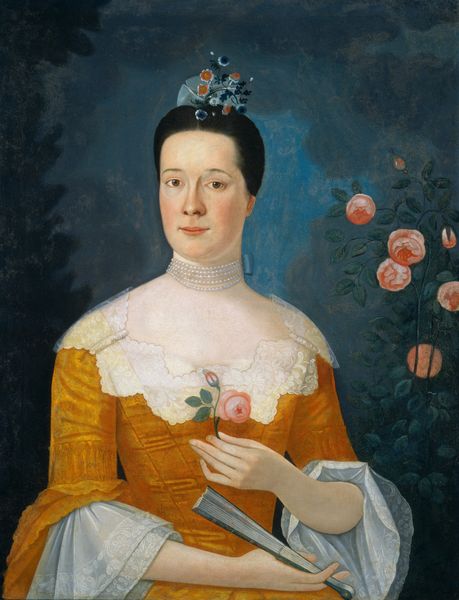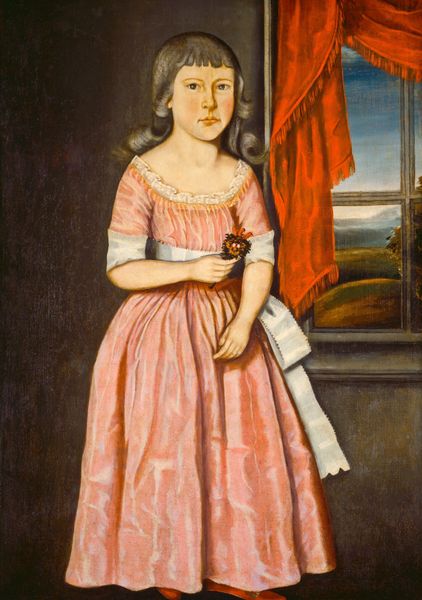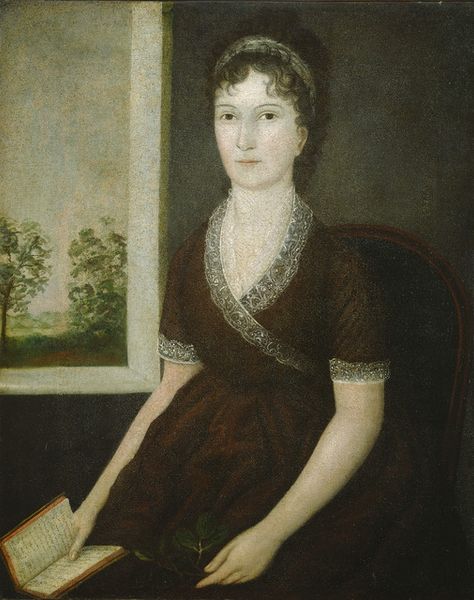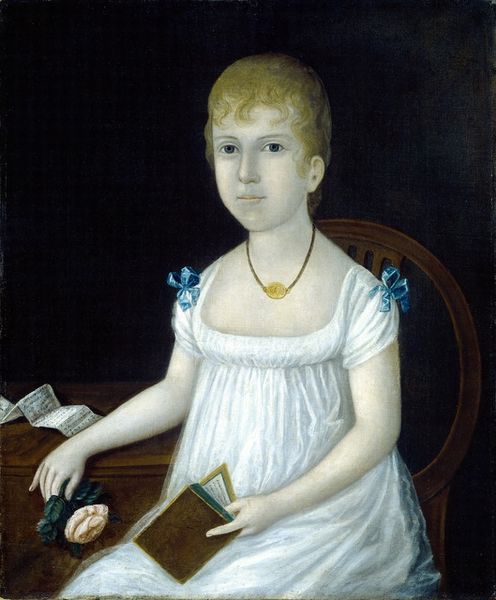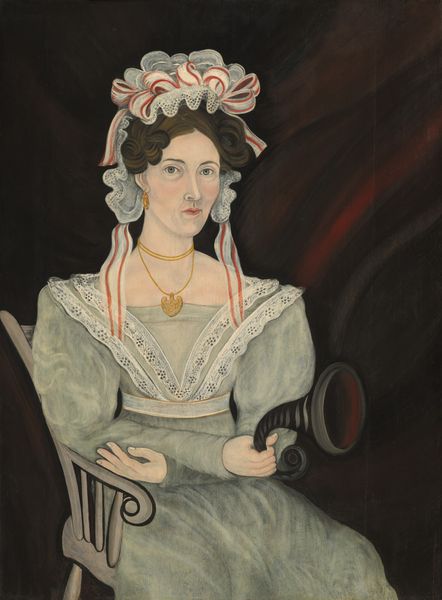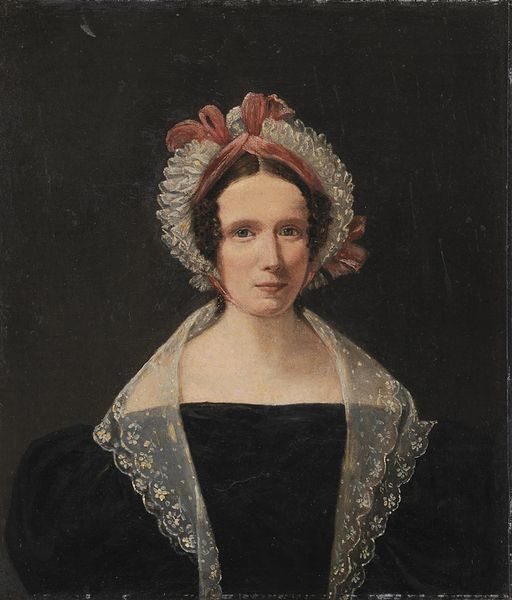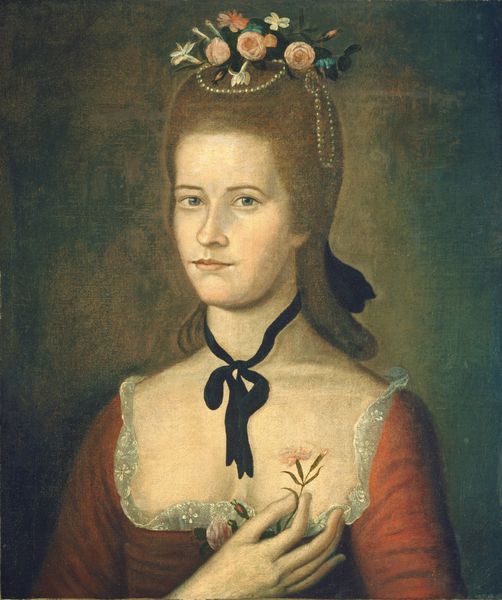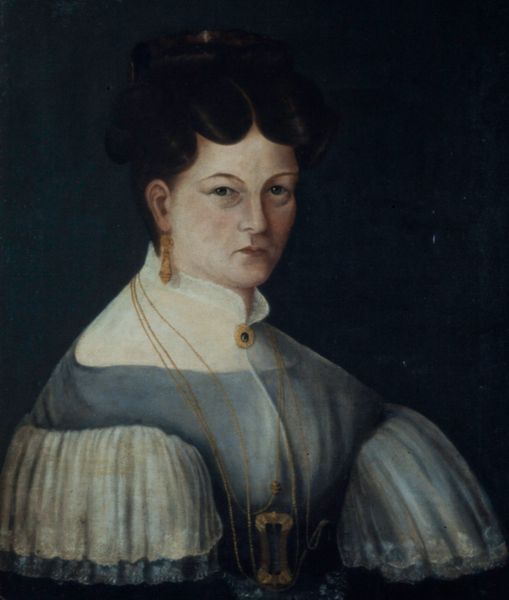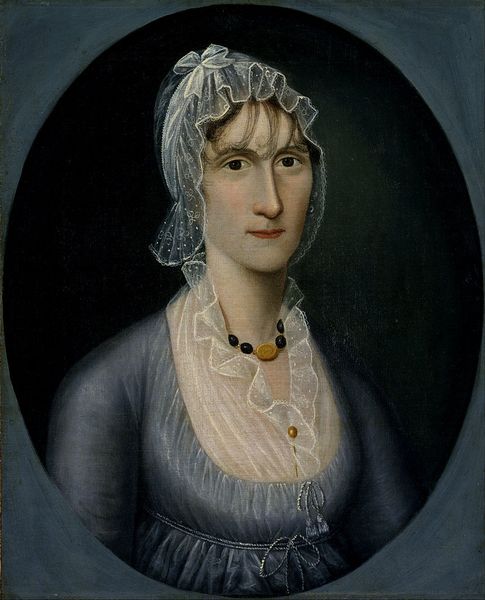
painting, oil-paint
#
portrait
#
neoclacissism
#
painting
#
oil-paint
#
oil painting
#
academic-art
Dimensions: overall: 56.2 x 43.2 cm (22 1/8 x 17 in.) framed: 68.6 x 55.2 x 6.9 cm (27 x 21 3/4 x 2 11/16 in.)
Copyright: National Gallery of Art: CC0 1.0
Curator: Here we have "Sophia Burpee Conant," an oil on canvas painting, circa 1813, attributed to The Conant Limner. The details in Sophia's dress indicate an upper-class position, and this canvas might've been commissioned to indicate status. What stands out to you, initially? Editor: The coolness! There's an undeniable stillness that resonates throughout this portrait. Sophia holds that delicate fan with such composed serenity. But look at how sharply she is defined against the dark background, it feels almost imposed. Curator: Yes, the way the sitter’s garments and hair have been represented give a very material feel. Note the decorative fringe across the top and sides as well. As a materialist, these features speak volumes. Limner likely rendered that backdrop separately, it's stiff. The focus definitely goes to the details in her garments. Editor: Indeed! That carefully crafted fan hints at so much: feminine decorum, wealth, perhaps even veiled communication. Fans have served as instruments for coquettishness in courtship for ages, a universal cultural symbol. It's carefully placed to evoke meaning. Curator: Given the context, I'd also draw your attention to her decorative hair and jewelry and their implied consumption. Notice, too, how simply the features are painted relative to the finery that Sophia has adorned. She likely would’ve overseen aspects of her family's textiles and decorative arts, indicating wealth but also perhaps involving skill and access to commodity and fashion systems. Editor: The white flowers in her hair, they’re echoed throughout the fabric of her sleeves and neckline in miniature form! It feels romantic and fleeting; a youthful aesthetic that speaks to a specific cultural moment. They indicate that this young woman wants to show her innocence. Curator: We can see then how these elements provide insights into social structures and practices of the era, while the iconography speaks more to established systems of aesthetic language. It's always illuminating to consider the confluence of objecthood and signification within art like this, no? Editor: Absolutely. Considering both materiality and symbol enriches the narrative we gather from this woman from so long ago. Thanks for making that all visible today!
Comments
No comments
Be the first to comment and join the conversation on the ultimate creative platform.
